SI2 CLARITY DIAMONDS
LEARN WHY SI2 CLARITY DIAMONDS ARE CONTROVERSIAL DIAMONDS
This post contains affiliate links. If you use these links to buy something I may earn a commission. Thanks! As an Amazon Associate I also earn from qualifying purchases.
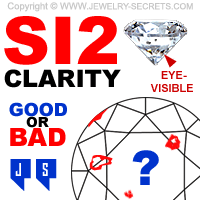
What are SI2 Clarity Diamonds?
Is SI2 clarity a good clarity or a bad clarity?
In other words, should you buy SI2 diamonds?
These are the questions we’ll look at and we’ll also see why SI2 clarity diamonds are the most controversial clarity of diamonds on the market.
SI clarity
SI means slightly included. Some call it “slightly imperfect“, but they all mean the same thing, the diamond has small inclusions in it.
The SI clarity group is broken down into 2 categories: SI1, which is the higher end of the SI range (closer to VS clarity), and SI2, the lower end of the SI clarities (closer to I clarity).
See the clarity chart below!

SI2 is not a bad quality at all… But, it is a borderline quality. SI2 divides all the diamonds in the world into 2 sections:
- Those that have invisible inclusions
- Those that have visible inclusions
SI2 falls right in the middle of those 2 groups.
The SI2 clarity chart:

Invisible inclusion range
SI1 clarity and higher (FL, IF, VVS, VS) is in the invisible inclusion range. That means that the inclusions aren’t actually “invisible“, but that they are invisible to the bare (unaided) eye (no microscope or 10x jeweler’s loupe). Under a scope, sure, you’ll be able to see the inclusions pretty easily, but not just by looking directly at the stone!
Eye-visible range
I1 clarity and lower (I1, I2 and I3) puts you into diamonds where the inclusions and flaws are large enough and obvious enough to see with the bare eye. Just by looking at these diamonds you’ll be able to see cracks, fractures, black carbon spots, clouds and crystals.
Most people will see these inclusions, think it is dirt on the diamond, and try to wipe it away. This doesn’t work of course. The inclusions in that diamond will never change. They have been in that diamond for a million years and will be for another.
Identification marks
Inclusions are like freckles and birthmarks on people. They were made and formed in nature and are just a way of identifying and characterizing a diamond. They are neither good or bad, inclusions are what they are; identification marks!
SI2 (the 8th grade from the top), is the clarity that separates these 2 groups: The visible inclusions from the invisible inclusions!
See the picture below to compare clarities:
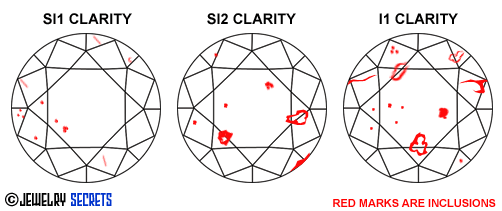
In SI2 diamonds, when viewed from the top (through the crown), you should NOT be able to spot any inclusions. However, if you have a larger diamond, or a cut of diamond that has less brilliance and sparkle (like an Emerald cut), then you may be able to detect these flaws if you look for them. Generally, they are not obvious or noticeable!
Change your viewing position
You CAN see inclusions in an SI2 if you change your viewing position. If you view an SI2 diamond from the side, looking at the diamond through the pavilion (base of the diamond), you should see flaws and imperfections. Common inclusions like:
- Carbon Spots – Diamond inclusions that often appear dark or black.
- Crystals – Minerals trapped within the diamond as it grew.
- Clouds – Foggy or milky areas in the diamond.
- Feathers – Fine, little breaks inside the diamond.
- Fractures – Jagged breaks inside the diamond that spread out.
Keep in mind, this is usually not a big issue. Once diamonds are mounted in rings, pendants, earrings or bracelets, the prongs, mounting, bezels and baskets will help cover up and hide these visible inclusions. And unless you look at them from the side view, you won’t see them!
Plus, when you show off your jewelry to your friends or family, they aren’t going to grab your hand, twist it and view the diamond from the side. No, they will always look at your ring straight down. Which is perfect! So unless you tell them that the diamond has inclusions, they won’t know, nor see them!
Controversial Diamonds
SI2 diamonds are very controversial diamonds because of the visible-invisible issue.
A lot of jewelers may try to pass off a lower grade diamond for an SI2. It’s true! They may call a nice looking I1 clarity an SI2 because it makes it sound better and sells better… (People are under the impression that you MUST buy at least an SI clarity or higher… They just don’t realize this actually means SI1). SI2 clarity is always the questionable clarity.
If you do purchase an SI2 clarity diamond (you’ll save money), do one thing…
BUY GIA OR AGS CERTIFIED!
Buying a GIA certified or AGS certified SI2 clarity diamond will guarantee that this SI2 rating is truly an SI2! This is very important!
With any other certificate company out there, an SI2 could be an I1 (Which means you spent too much!)
Certification matters, but WHO certifies it matters more!
And if you want to know whether or not to Buy SI2… I’d say “Sure, Why Not?” But…
Magnify the stone first!
Use a microscope or a 10x jeweler’s loupe (10x magnification) and see why it’s considered an SI2. Compare that diamond to an SI1 diamond and then to an I1 clarity. This way you’ll understand why it’s an SI2 and if it’s right for you.
Viewing SI2 diamonds under magnification may sway your decision to purchase one way or the other…
And it may just may make you say “SOLD!”
It’s up to you.
- Certify
- Scope
- Compare
Then make up your mind.
Invisible or Not?
Those are the flaws…
Or you can just take the easy route and buy from James Allen – awesome diamonds (best cut, symmetry, and polish you can buy, with pure white color, no fluorescence, and low, low prices)… Use “RINGSUM” at checkout to save an additional 10% off the ring mounting!
| CARAT WEIGHT, CLARITY, COLOR, CUT, CERTIFIED | PRICE | VIEW |
| .70, SI2, F, EXCELLENT, GIA | $1,020+ | VIEW |
| .80, SI2, F, EXCELLENT, GIA | $1,080+ | VIEW |
| .90, SI2, F, EXCELLENT, GIA | $1,970+ | VIEW |
| 1.00, SI2, F, EXCELLENT, GIA | $2,350+ | VIEW |
| 1.25, SI2, F, EXCELLENT, GIA | $3,860+ | VIEW |
Cheers! :)




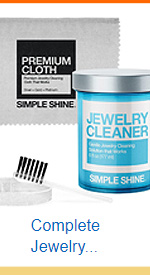
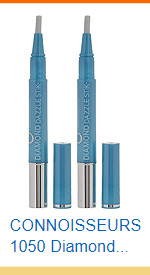


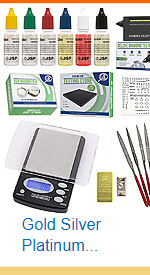

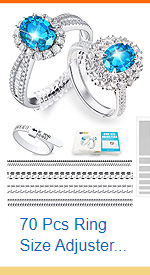
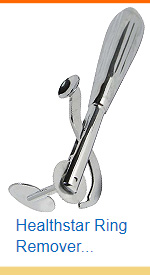
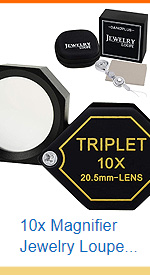
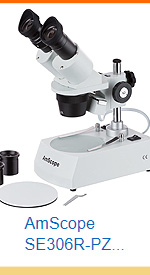




Leave a comment